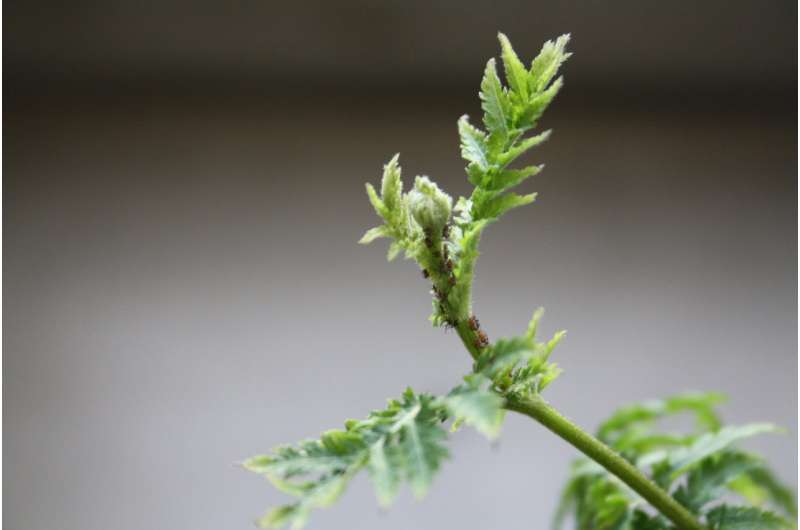Aphids manipulate their food

How do aphids reproduce on plants so successfully? This is among the questions that Professor Dr. Caroline Müller and her research team are addressing at Bielefeld University's Faculty of Biology. They have discovered that aphids are able to influence the quality of their food, and that this may enable them to construct a niche on their own host plants. Müller's research team is located in the Transregio Collaborative Research Centre NC3 that is studying animals and their individual niches. They have published their findings in the journal New Phytologist.
There are hundreds of aphid species. They all feed on plant sap, known as phloem sap. The nutritional value of the phloem sap is determined by the sugar concentration and the concentration and composition of amino acids. Previously, it was not known how the quality of plant sap changes in different plant parts after aphid infestation, how this change in quality influences the development of aphids, and how, in turn, the aphids can change the composition of the plant sap.
Müller and her team are the first to confirm that aphid infestation actually does change the composition of the plant sap depending on which aphid species is infesting which specific part of the plant. For example, infestation of the stem close to the bud with a certain aphid species changes the composition of sugar and organic acids in the sap. In contrast, infestation of the old leaves with another aphid species increases the concentration of amino acids. And a further phenomenon can also be ascertained: "We were able to observe that the aphid species that developed best on the stem close to the bud and the other species that proliferated best on the old leaves each specifically increased the quality of the plant sap of the corresponding plant part," says Ruth Jakobs, a research assistant at the Faculty of Biology. Hence, aphids construct their own niche in such a way that they are able to profit from it. "We can assume that aphids behave in a similar way to, for example, beavers that settle in the dams they have constructed themselves," says Müller.
The biologists gained their findings by placing aphids on different parts of common tansy plants—the stem close to the bud, a young leaf, and an old leaf—and determining the growth of the populations of these insects at these locations. In addition, the biologists collected the plant sap and analysed its chemical composition.
More information: Ruth Jakobs et al, Aphid infestation leads to plant part-specific changes in phloem sap chemistry, which may indicate niche construction, New Phytologist (2018).
Journal information: New Phytologist
Provided by Bielefeld University



















